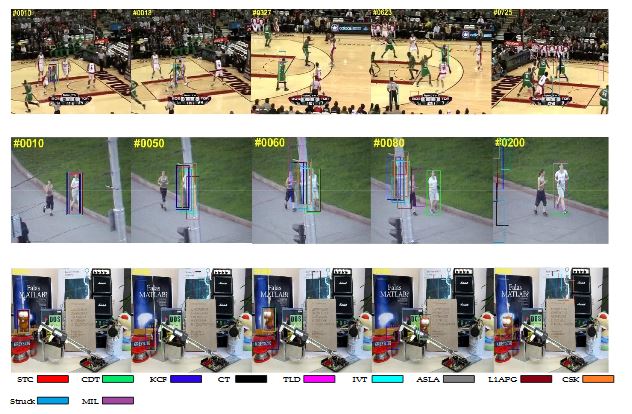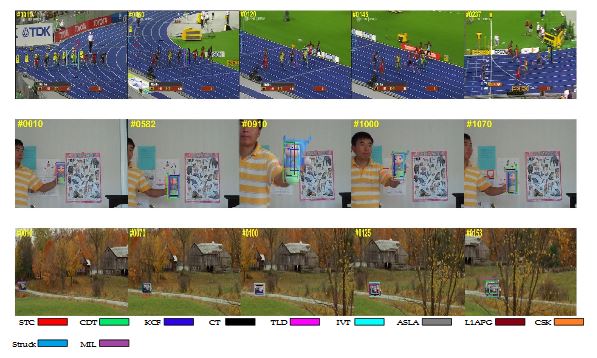ABSTRACT
Occlusion is a challenging problem in visual tracking. Therefore, in recent years, many trackers have been explored to solve this problem, but most of them cannot track the target in real time because of the heavy computational cost. A spatio-temporal context (STC) tracker was proposed to accelerate the task by calculating context information in the Fourier domain, alleviating the performance in handling occlusion.
In this paper, we take advantage of the high efficiency of the STC tracker and employ salient prior model information based on color distribution to improve the robustness. Furthermore, we exploit a scale pyramid for accurate scale estimation. In particular, a new high-confidence update strategy and a re-searching mechanism are used to avoid the model corruption and handle occlusion. Extensive experimental results demonstrate our algorithm outperforms several state-of-the-art algorithms on the OTB2015 dataset.
RELATED WORKS

Figure 2. The flowchart of the proposed tracker. The salient prior model based on color distribution is used for tracking in our tracker
Herein we point out the inherent drawbacks of the original scale adaption scheme in STC tracker and propose a simple but efficient scale pyramid to handle the scale variations. Besides that, we explore a high confidence model updating mechanism and re-search method by introducing a novel tracking indicator to avoid model corruption and predict tracking failures in advance. The process of our algorithm is shown in Figure 2 and the main procedures will be explained in detail below.
PROPOSED METHOD
In this section, we first review the STC tracker process. Then we will present our tracker (CDT) focusing on four aspects, which are the color distribution-based prior model, scale adaption scheme, high confidence updating strategy and the re-search technique.
EXPERIMENTS

Figure 3. Qualitative results of our method and the nine state-of-the-art tracking methods on sequences Basketball, Jogging-2 and Lemming
Figure 3 shows the situation in which the target is partially or short-term fully occluded. We can find that some trackers such as IVT somehow fail in the sequences, while our algorithm tracks the target effectively in these sequences. The reason why our algorithm can outperform than other trackers is that we exploit a new update strategy and a re-search mechanism. When the problem of occlusion occurs, the criteria in our method will reveal it and the model won’t be updated to avoid introducing errors.

Figure 5. Qualitative results of our method and the nine state-of-the-art tracking methods on sequences Bolt, Carscale and Doll
Figure 5 presents the tracking results on the sequences with scale variation. The scale of the target usually changes during tracking. Therefore, it is necessary for a tracker to adjust the size of the target window, otherwise, the tracker may fail because it acquires more background information. As we utilize a scale pyramid for scale adaptation, our tracker can capture the target with different scales for further selection.
Authors: Zishu Zhao | Yuqi Han | Tingfa Xu | Xiangmin Li | Haiping Song | Jiqiang Luo